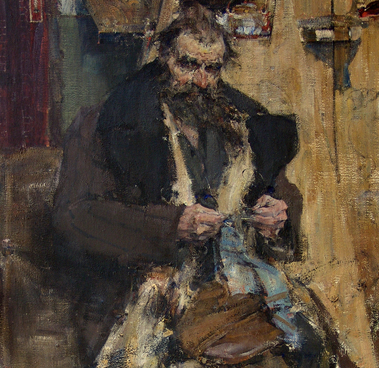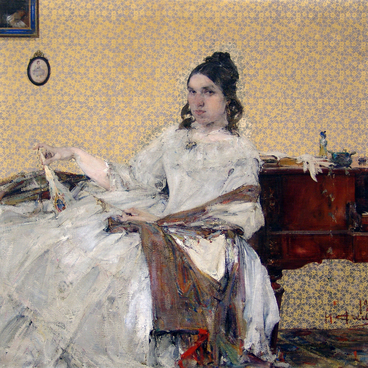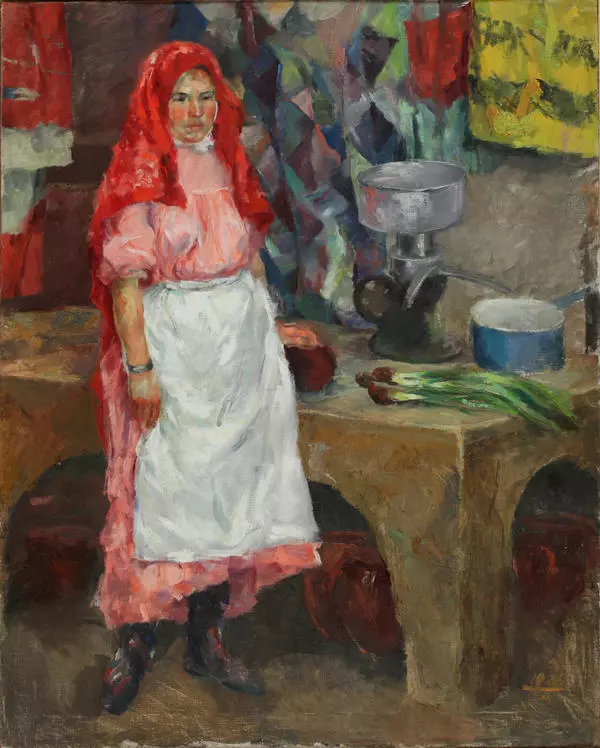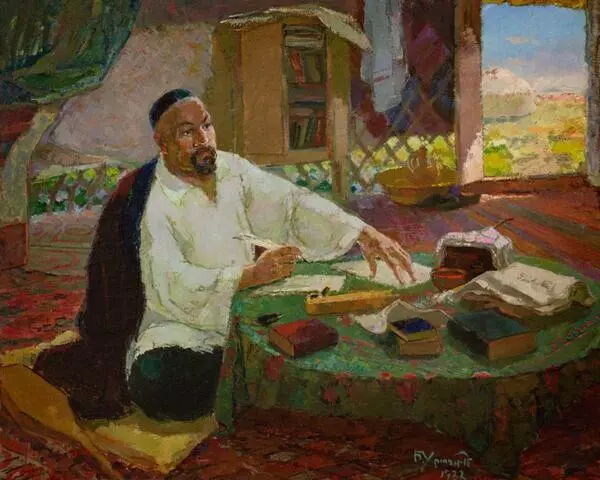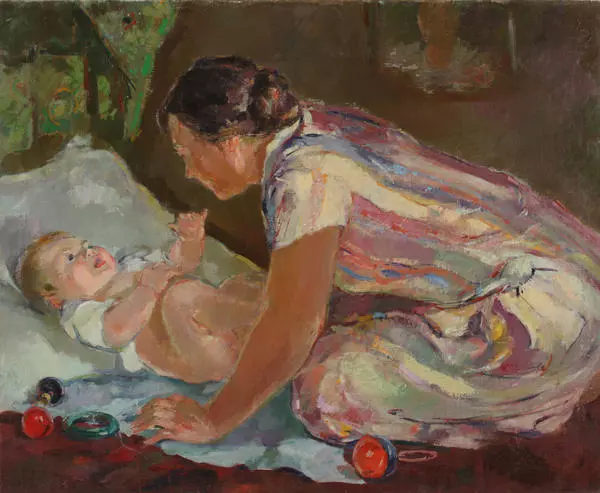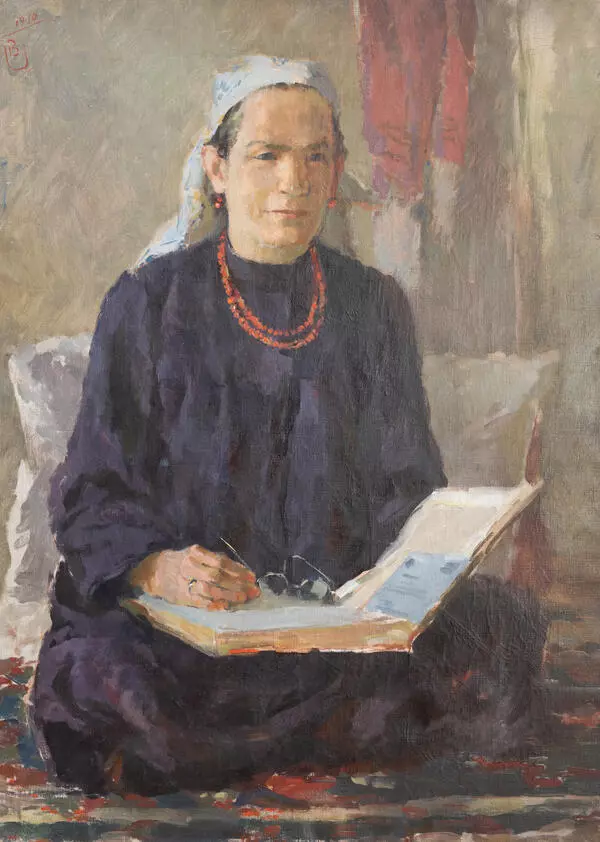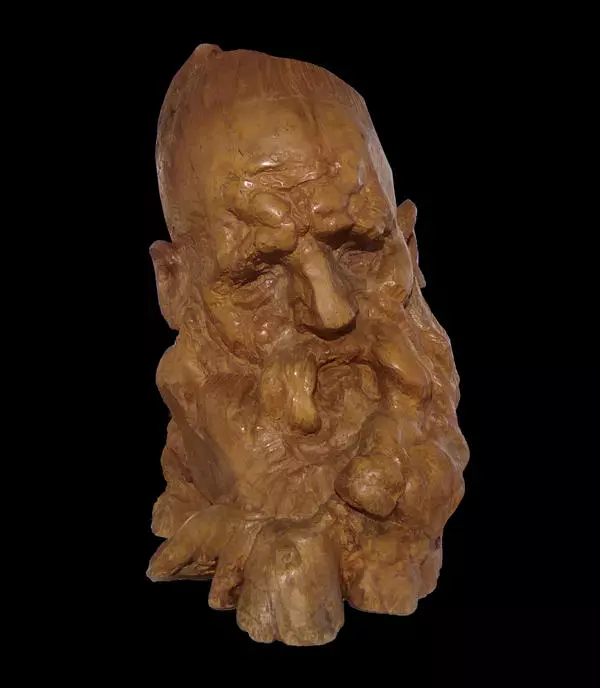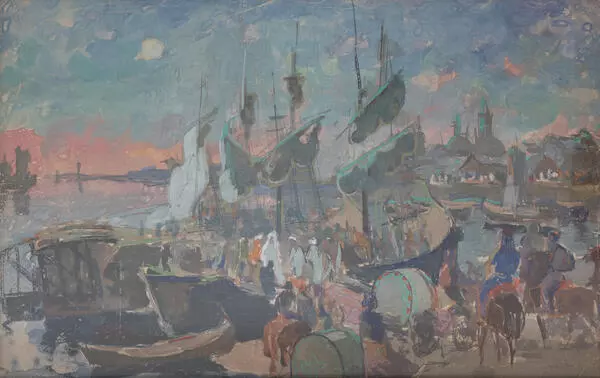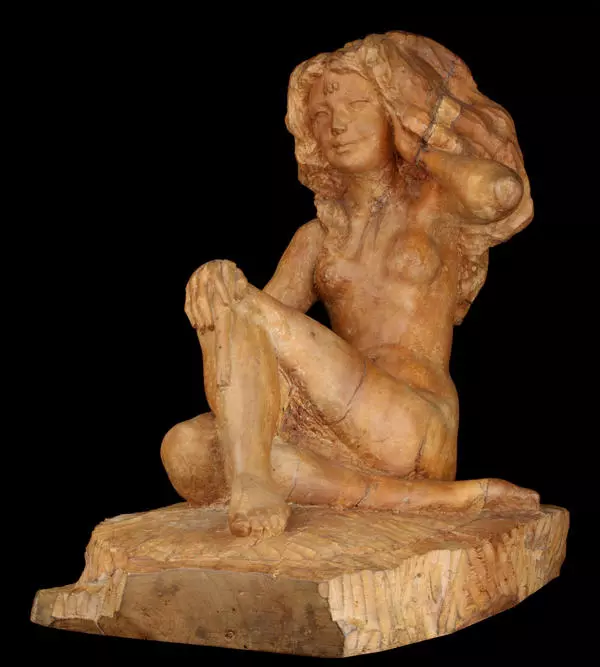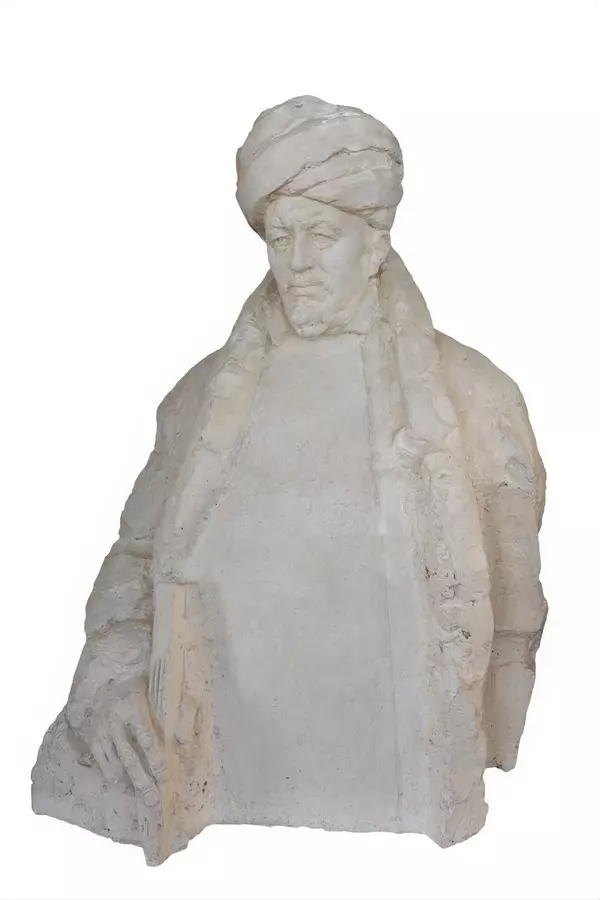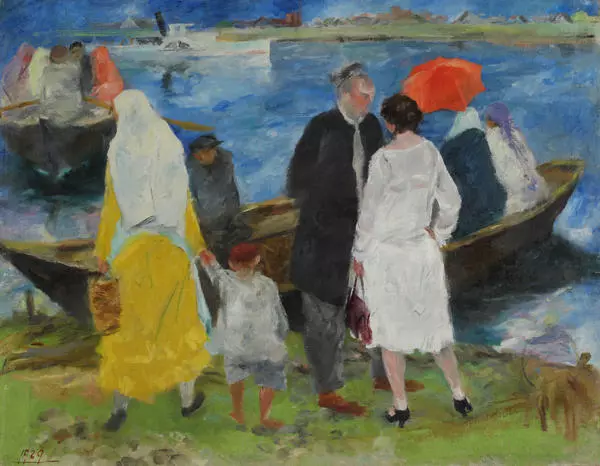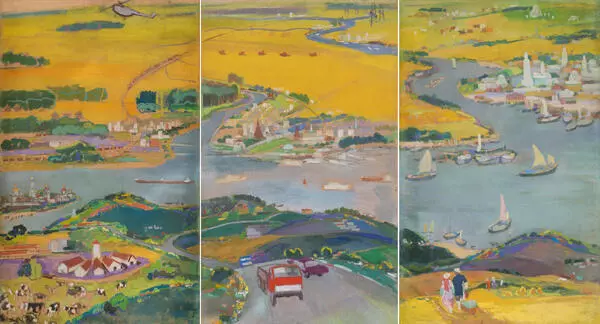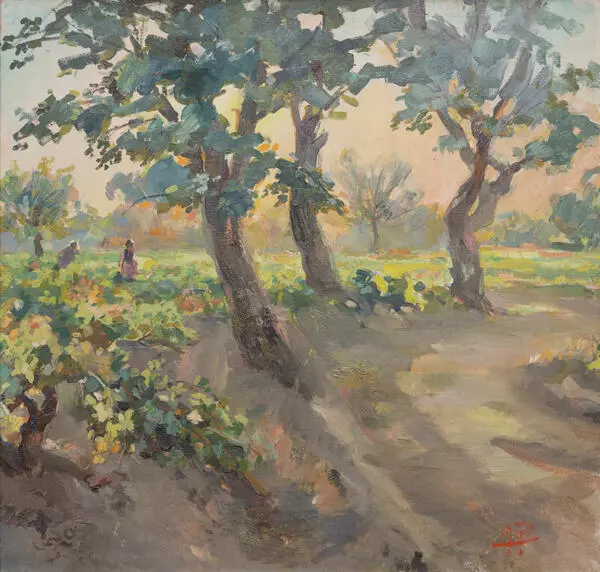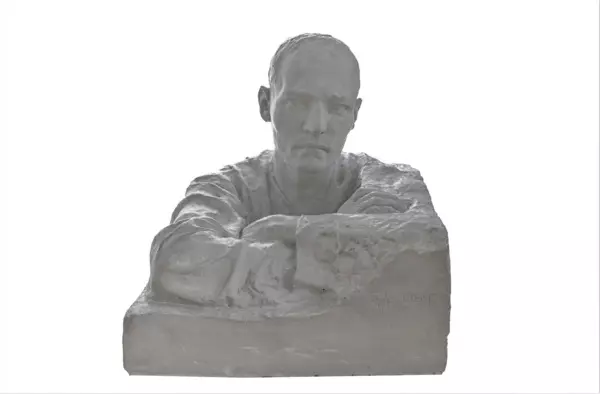Bucky Urmanche, a Tatar artist, moved from Moscow to Alma-Ata in 1941: he was invited to participate in the preparations for the 100th anniversary of poet Abay. The Kazakhstan period came at a wartime, and although it was not simple, it was fruitful. He painted a whole portrait series of eminent cultural personalities, and a portrait of famous Kazakh dancer Shara Zhandarbekova among them.
Shara Zhandarbekova, nee Zhienkulova, gained great popularity by performing dances and songs. Besides playing roles in musical performances, the People’s Artist of Kazakhstan also acted as a choreographer. For one play, she invented and performed the “Kelinshek” dance, which was considered the first national dance of the Republic, laying the foundation for all Kazakh choreography.
The actress traveled a lot around Kazakhstan, collected folklore, studied local traditions, carefully watching the life of her people, whether it was a family meal in a yurt or work on a loom. Her dances were at times born out of such observations, myths and legends. As such, her specific recognizable interlacing of arms appeared.
Zhandarbekova travelled not only across Kazakhstan: the philharmonic ensemble Songs and Dances of World Nations, under her direction, toured throughout the Soviet Union and visited many foreign countries.
Shara Zhandarbekova, nee Zhienkulova, gained great popularity by performing dances and songs. Besides playing roles in musical performances, the People’s Artist of Kazakhstan also acted as a choreographer. For one play, she invented and performed the “Kelinshek” dance, which was considered the first national dance of the Republic, laying the foundation for all Kazakh choreography.
The actress traveled a lot around Kazakhstan, collected folklore, studied local traditions, carefully watching the life of her people, whether it was a family meal in a yurt or work on a loom. Her dances were at times born out of such observations, myths and legends. As such, her specific recognizable interlacing of arms appeared.
Zhandarbekova travelled not only across Kazakhstan: the philharmonic ensemble Songs and Dances of World Nations, under her direction, toured throughout the Soviet Union and visited many foreign countries.
On those trips, the dancer continued to study local traditions and collect dances and music for them, and then used all that to create her stage images.
“Here she performs the Kazakh dance, then immediately reincarnates, and this is a different rhythm, another, let”s say, Indian dance style, and she sings in Hindi, then goes to Chinese, Georgian, Russian, Vietnamese dance…”, Zaurbek Raibaev, a choreographer, recalled the dancer’s performances.
The artist uses the laws of ornamental art to create a lead character image. Folds of her bright yellow dress lie in a thoughtful manner, subject to the carpet patterns rhythm. Coins and plaques lie in the same rhythm, completely covering the chest and the high Kazakh headdress.
In his portraits, Urmanche managed to stand a chance against the trends of the time – he got no interest in the increased solemnity, superficial glorification, and sketchiness. He retained deep truthfulness and humanity in his art.
“Here she performs the Kazakh dance, then immediately reincarnates, and this is a different rhythm, another, let”s say, Indian dance style, and she sings in Hindi, then goes to Chinese, Georgian, Russian, Vietnamese dance…”, Zaurbek Raibaev, a choreographer, recalled the dancer’s performances.
The artist uses the laws of ornamental art to create a lead character image. Folds of her bright yellow dress lie in a thoughtful manner, subject to the carpet patterns rhythm. Coins and plaques lie in the same rhythm, completely covering the chest and the high Kazakh headdress.
In his portraits, Urmanche managed to stand a chance against the trends of the time – he got no interest in the increased solemnity, superficial glorification, and sketchiness. He retained deep truthfulness and humanity in his art.
